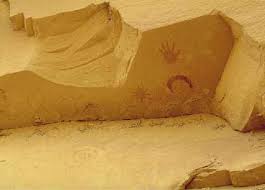By: Tyler Arsen
Imagine looking up at the sky and seeing an immense, unexpectedly bright object that you had never seen before. How would you react?
Well, this is exactly what happened to the Chinese astronomers of old. In late July of 1054, a star that may have been upwards of ten times larger than that of our sun exploded in a dazzling, voilent death. This event made for one of the most interesting and noteworthy astronomical events in the history of the human race.
Had the event occurred 50 light-years from earth, it would have destroyed all life in a blast of radiation. As it was, the event creating nothing more than a spectacular light show, comparable to fireworks on the fourth of july.
The Chinese described the brightness of the supernova as six times brighter than Venus. For two years, an object as brilliant as a second full moon was visible in the night sky.
For a time, it was even visible during the daylight.
The Chinese weren’t the only civilization to witness this spectacular event. The Sanagua Tribe is the best known indian tribe in a regional group known as the Western Anasazi, located in Arizona.
Their culture was highly based in corn farming and substinence hunting and gathering, but evidence was also found that at some point they developed a system of “Sun Shrines” in order to observe the heavens. Probably used to time the planting and harvesting of crops, they also were instrumental in their viewing of the supernova of 1054.
The Indians depicted the event on rock art known as “petroglyphs”.
Eventually, the nebula faded from sight and was forgotten for about six centuries. After the invention of the telescope, the nebula was again spotted in 1758 and became of subject of fascination within the scientific community. To this day, it is still studied intently due to interest in the neutron star spinning at the center of the nebula.
Interested in learning a little more? Check out this video by SciShow Space entitled “The Supernova of 1054, Our Very Special “Guest Star”:
Also, if you liked my post and want to read up a little more on the topic of astronomy, I would recommend The Space Writer. It’s an incredible interesting and informative blog.
Thanks for stopping by!
Sources:
http://www.nasa.gov/multimedia/imagegallery/image_feature_567.html
http://space.about.com/od/nebulae/a/CrabNebula.htm

